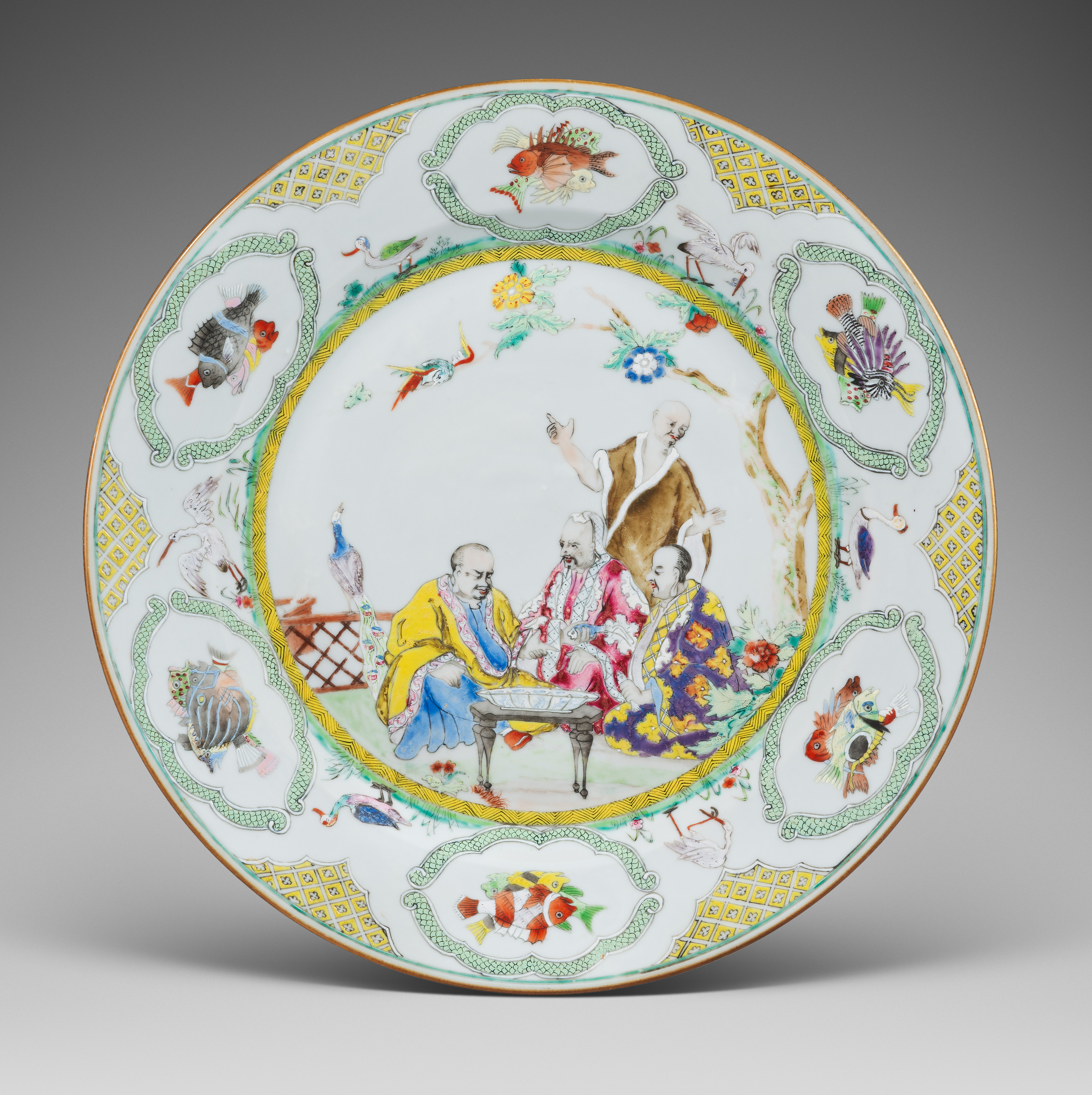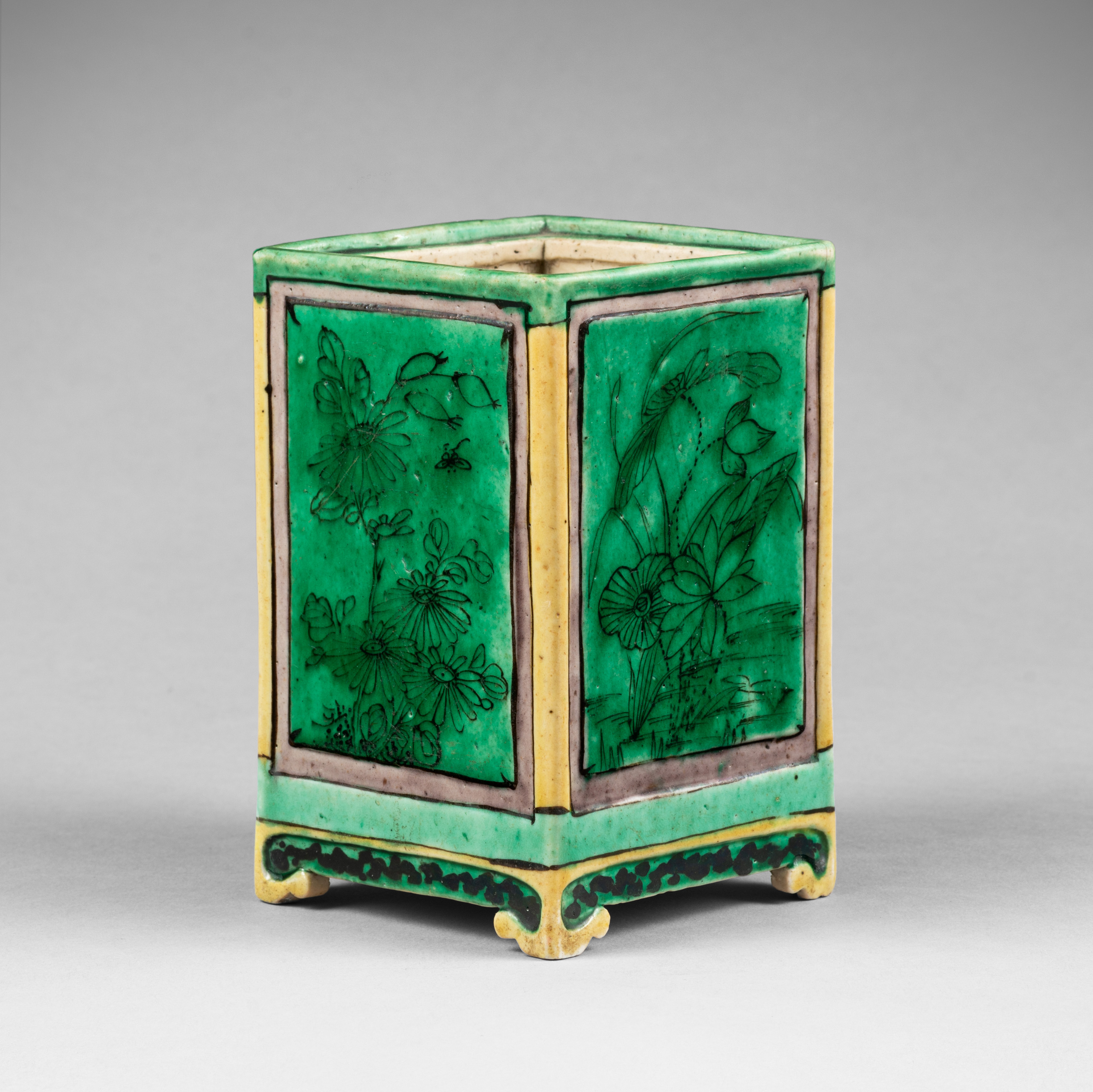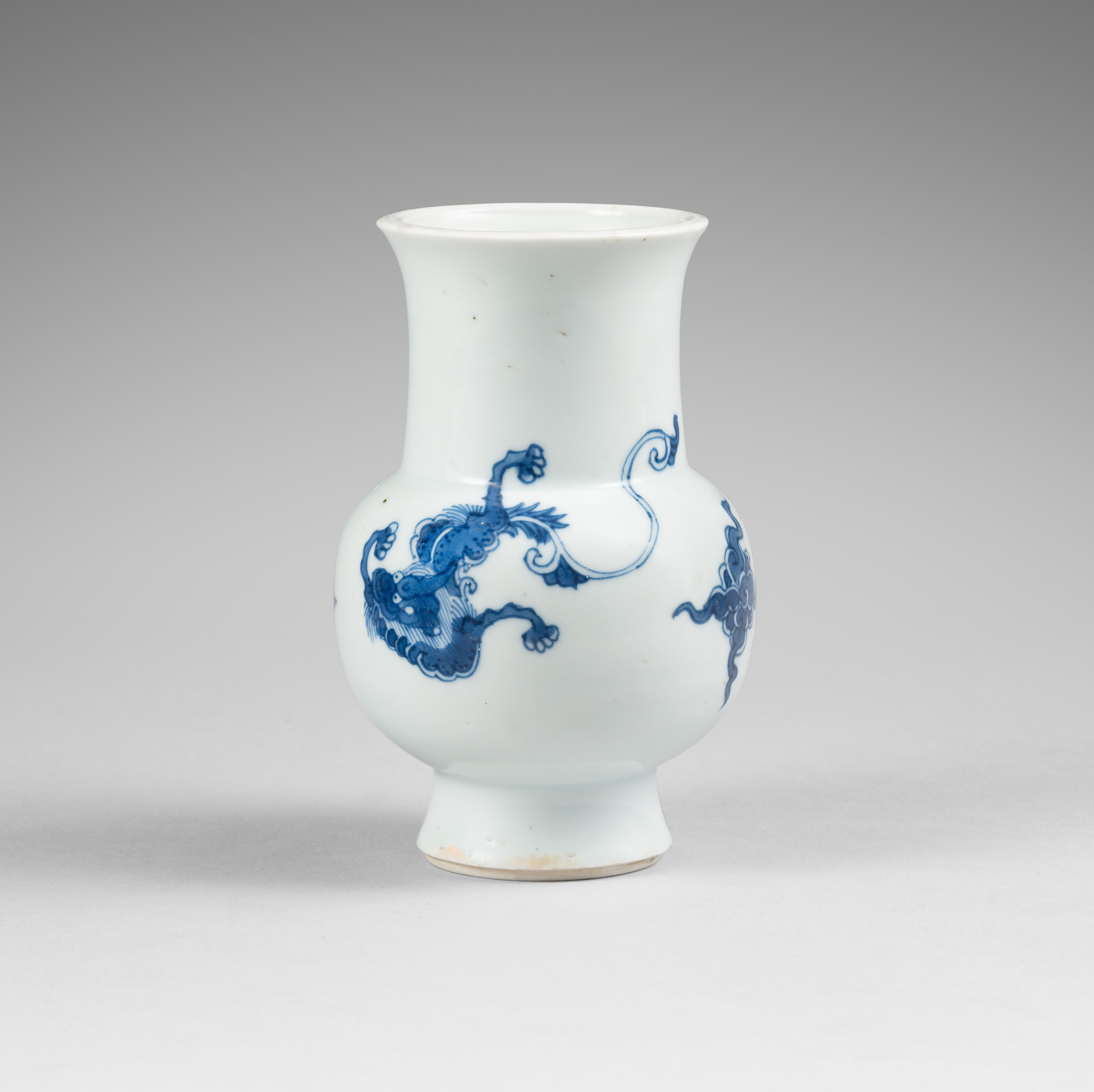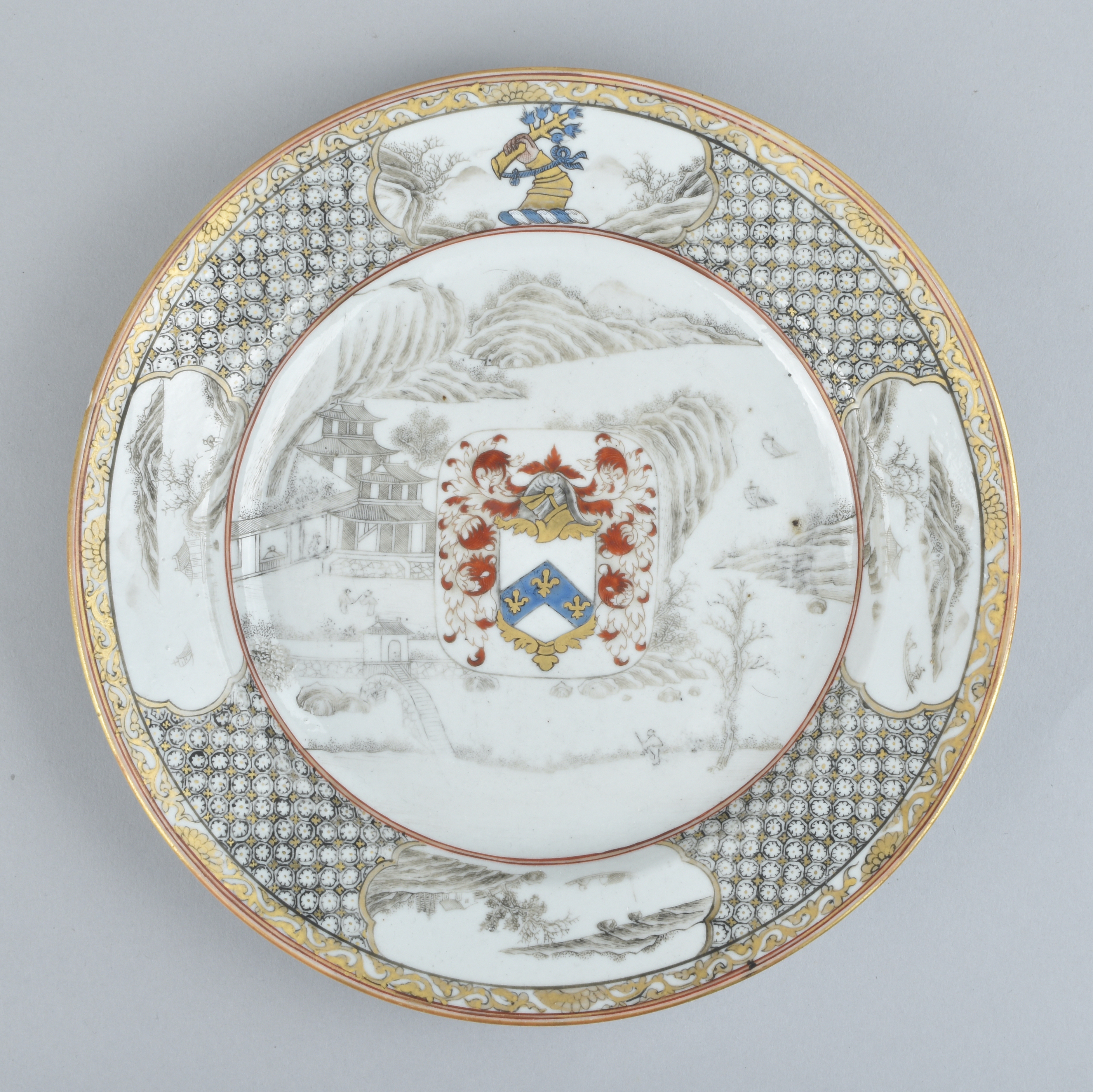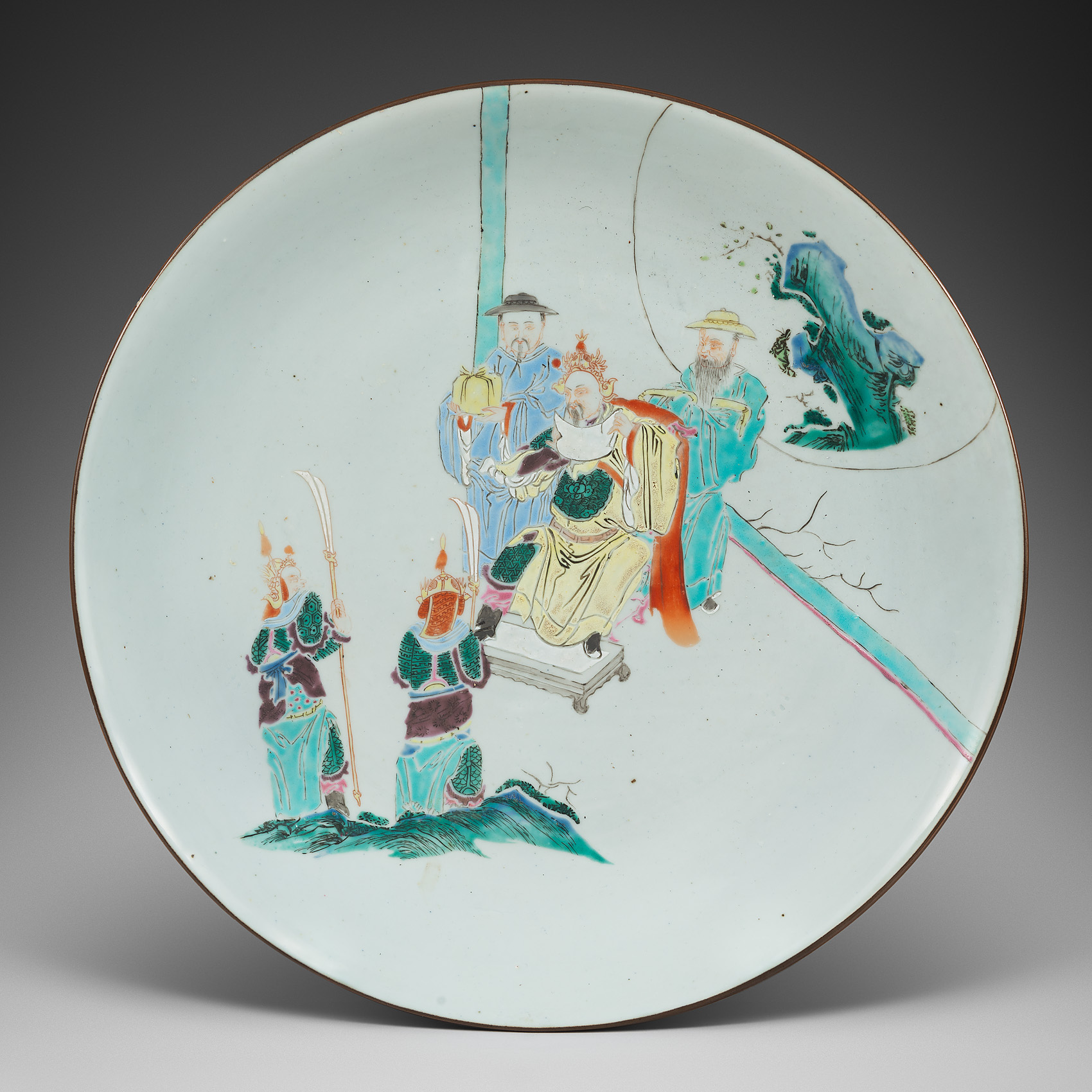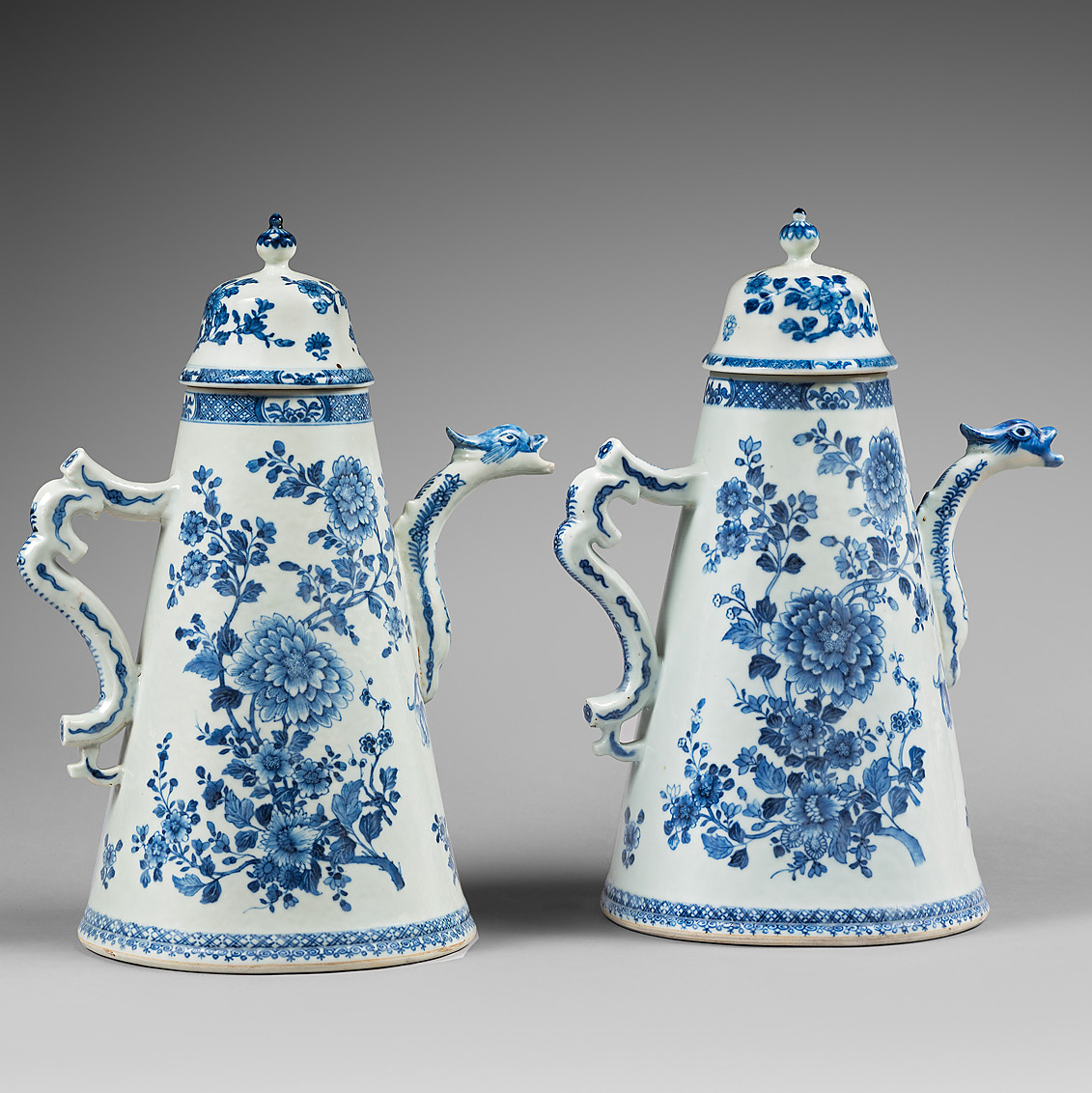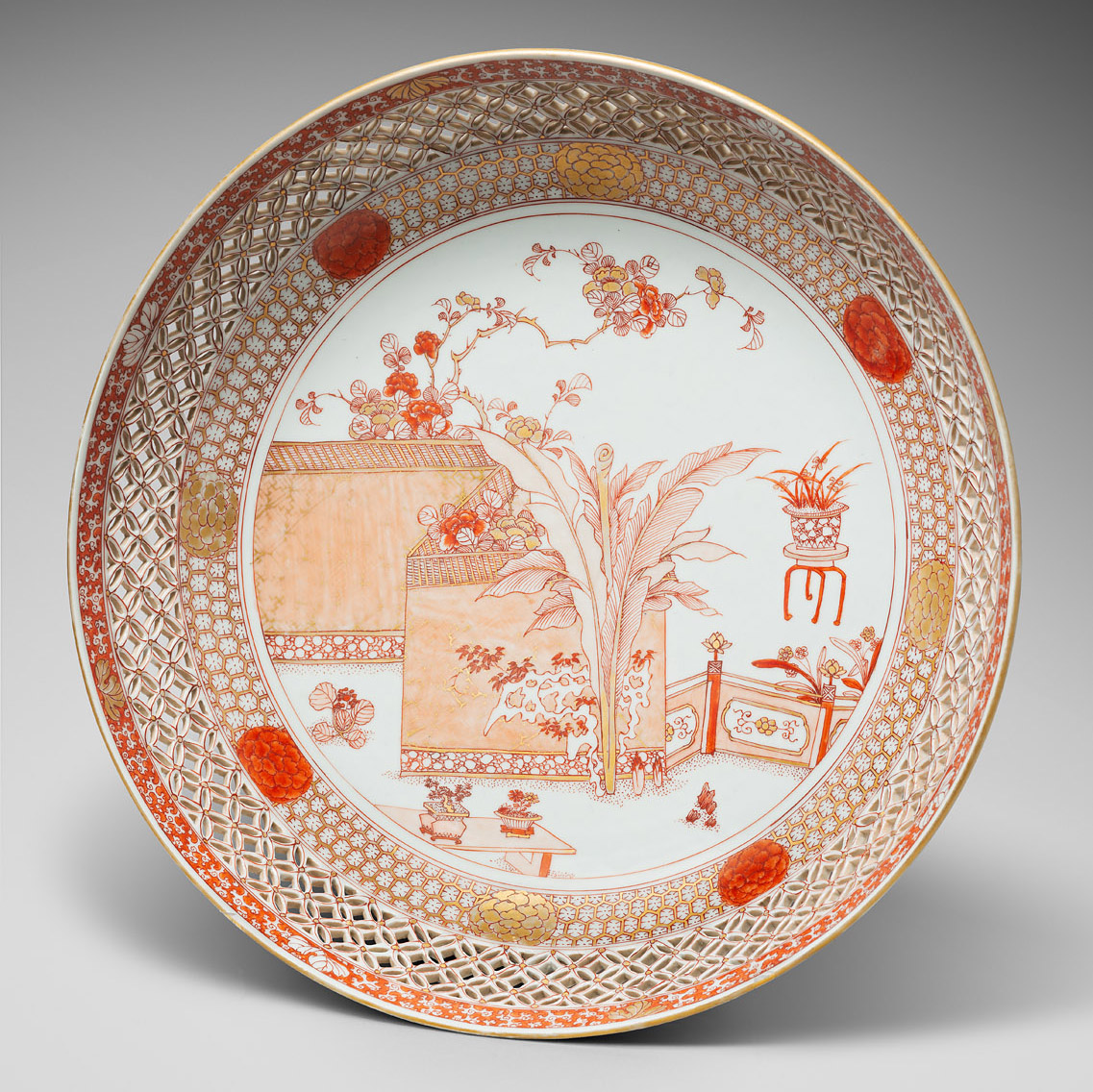
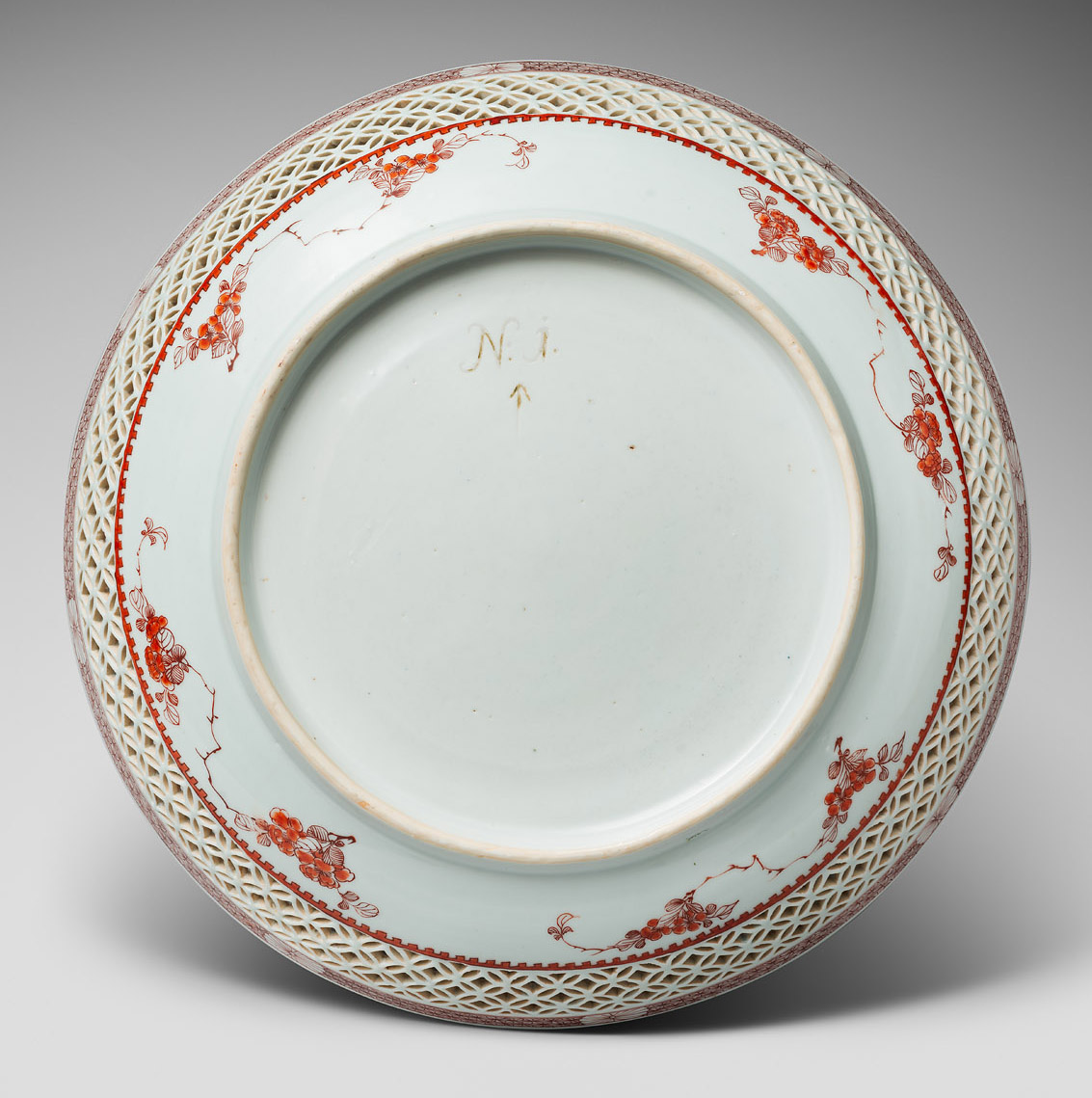
A large reticulated iron-red and gilt dish with the Johanneum inventory mark. Kangxi
The shallow round dish, with pierced wall, is decorated with an iron-red and gold Southern Chinese Garden setting comprising balustrades and walls, a banana tree in front of a Taihu decorative rock with holes in it, a flowering magnolia tree and pots with orchids and miniature landscapes on stands.A honeycomb patterned band filled with flowers and punctuated by eight cartouches filled with stylized peony flowers runs around the bottom. The wall is in openwork and decorated with a coin pattern. The band below the lip is decorated with floral elements depicted in an archaic style. The verso with wheel cut Johanneum inventory mark N = 1 ↑(inventory 1721).
- Country:
- China
- Period :
- Kangxi (1662-1722)
- Material:
- Porcelaine
- Dimension:
- 12.59 in. (32 cm)
- Reference :
- D615
- Status:
- sold
Provenance
August II, 'August the Strong', Prince-Elector of Saxony (1670-1733), King of Poland, Dresden.
Related works
A very closed dish is still in the Dresden collection (inv. No P.O.3062), published by Eva Strober in La Maladie de porcelain, Edition Leipzig, 2001, p.82, no. 34 and in The Dresden Porcelain Collection: China, Japan, Meissen, Masterpieces, Deutscher Kunstverlag, 2007, p. 31.
There is a comparable dish illustrated by Ulrich Wiesner in Chinese ceramics from the collection of Ignazio Vok, Museum für Ostasiatische Kunst, 1983, no. 151.
Another example was in the Benjamin F. Edwards III Collection (Christie’s NYC, The Benjamin F. Edwards III Collection of Chinese Export Porcelain, Part III, 20 january 2004, lot 87.
Notice
August the Strong is perhaps best remembered as a patron of the arts and architecture; the Royal Porcelain Collection in Dresden established in 1715 with its fine collection of Chinese, Japanese and German ceramics as well as the creation of hard paste porcelain for the western world are certainly his most prominent initiatives.
He spent an enormous amount of money for the expansion of his collection. The story of the acquisition of a series of Chinese vases has already become almost legendary. In 1717, Augustus the Strong acquired 151 Chinese porcelain vessels decorated in blue and white from Frederick William I of Prussian in exchange for 600 soldiers from his own army. These soldiers then formed the Frederick William’s Dragoon Regiment, and ever since these Chinese vases have been called Dragonervasen. August the Strong intended to dedicate an entire castle – the “Japanese Palace” to appropriately exhibit his porcelain treasure.
Johanneum marks are inventory marks added to porcelain from the collection of Augustus the Strong (1694-1733). The first inventory was made in 1721 and the second one dedicated to the porcelain collection at Dresden was made between 1770 and 1779.
The latter is compiled in five volumes including the original data from the 1721 inventory as well as the additions related to new acquisitions. The inventory numbers were painted in black, or cut through the glaze with a glass cuter’s wheel and blackened (as on the present dish).
In some cases, the numbers have only been drawn in ink and have washed away by natural causes. The term “Johanneum” was taken from the building in Dresden to which the royal collection was moved 1875-76.
Photography : Jérémie Beylard / Agence PHAR




















